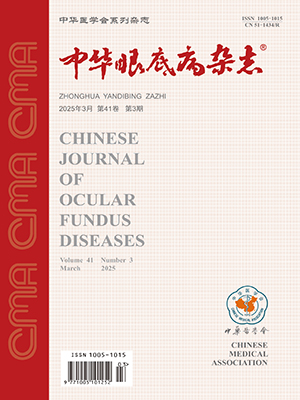Objective To observe the content of thromboxane (TXA2 ) and prostacyclin (PGI2) in optic nerves after forehead impact injury.Methods The right forehead zones of 32 rabbits were struck by biology impact machine. Tweenty-four rabbits that had afferent papillary defect after injury were chosen, and randomly divided into four groups: 1 day, 2, 4, and 7 days group. Right eyes were in the experimental group and left eyes were in the control group. Flash visual evoked potentials were examined before and after the traumatic injury. The rabbits ′eyes were removed, the optic nerves were pathologically examined, and the content of TXB2 and 6-Keto-PGF1αwhich were the products of TXA2 and PGI2 were assayed 1, 2, 4, and 7 days after traumatic injury respectively.Results Histopath ological examination revealed the findings of injuries of optic nerves of all the 24 rabbits. The latency of wave P1 was significantly delayed after traum atic injury (P lt;0.01), and amplitude of wave P1 was significantly decreased after traumatic injury (P lt;0.01). The content of TXB2 [(172.35±26.52) pg/mg ]and 6-Keto-PGF1α[(161.78±24.83) pg/mg]were significantly higher in the injured optic nerves than in the uninjured ones 1 day after the traumatic injury (P lt;0.01). The rate of TXB2 /6-Keto-PGF1α (1.077±0.18) was significantly increased compared to the control group (P lt;0.05), and lasted to the 7th day.Conclusions The content of TXA2 and PGI2 significantly increases and the ratio of them is lopsided after forehead impact injury in rabbits. (Chin J Ocul Fundus Dis,2003,19:49-51)
Citation: YU Hai,YE Jian,HE Xiangge. The content of thromboxane and prostacyclin in optic nerves after forehead impact injury in rabbits. Chinese Journal of Ocular Fundus Diseases, 2003, 19(1): 49-51. doi: Copy
Copyright © the editorial department of Chinese Journal of Ocular Fundus Diseases of West China Medical Publisher. All rights reserved




